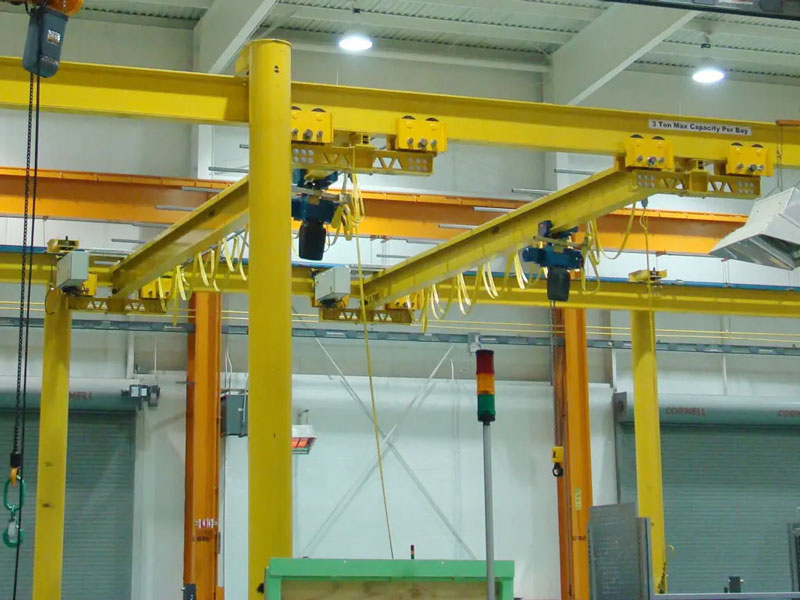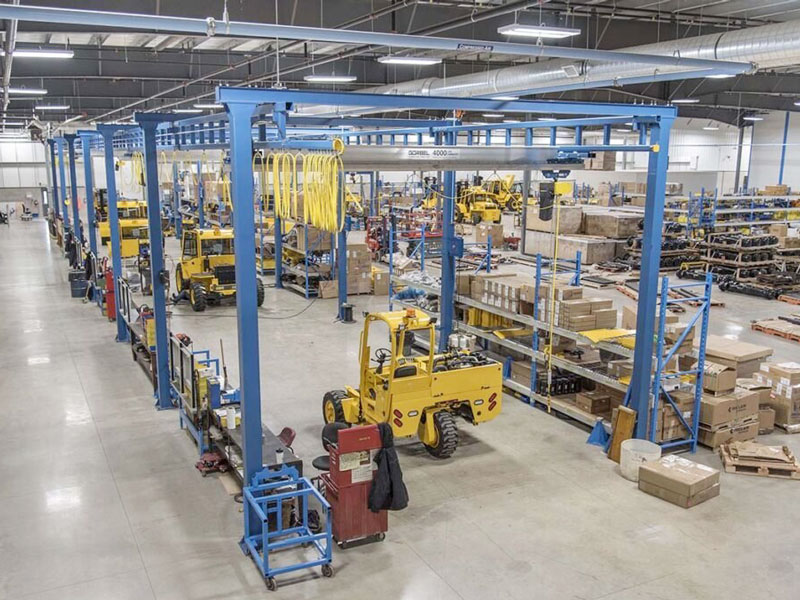A workstation bridge crane, also known as a KBK crane (named after Kranhäuser-Bahnsystem-Kran, the German term for the system), is a type of overhead crane commonly used in industrial settings. It is designed to provide efficient and flexible material handling within a limited workspace.
The workstation bridge crane operates on a bridge and runway system. It consists of a bridge, end trucks, a hoist, and a runway. The bridge is the horizontal beam that spans the width of the workspace, while the end trucks are located at either end of the bridge and provide support and movement. The hoist is the lifting mechanism that moves vertically along the bridge and is used to lift and lower loads. The runway is the track on which the bridge and end trucks travel.

Bridge: The bridge is the main load-bearing component of the crane. It is typically made of steel and spans the width of the workspace. The bridge supports the end trucks and the hoist assembly.
End Trucks: The end trucks are located at each end of the bridge and house the wheels or casters that enable the crane to move along the runway. They also support the bridge structure and distribute the load.
Hoist: The hoist is the lifting mechanism of the crane. It consists of a motorized unit with a hook or other lifting attachment. The hoist travels along the bridge, allowing for vertical movement to lift and lower loads.
Runway: The runway is a track system that provides a path for the bridge and end trucks to move along. It is typically mounted on the ceiling or support structure of the workspace. The runway ensures smooth and controlled movement of the crane.
Controls: Workstation bridge cranes are typically equipped with control systems that allow operators to control the movement of the crane. These controls can include pendant controls or remote control systems, allowing the operator to move the crane, hoist, and control lifting operations.
Support Structure: Depending on the specific installation requirements, a workstation bridge crane may require additional support structures, such as columns or beams, to provide stability and support for the crane system.

Overall, the workstation bridge crane or KBK crane provides a versatile and efficient solution for material handling in a limited workspace. Its modular design and flexible configurations make it suitable for various applications in industries such as manufacturing, warehouses, and assembly lines.
